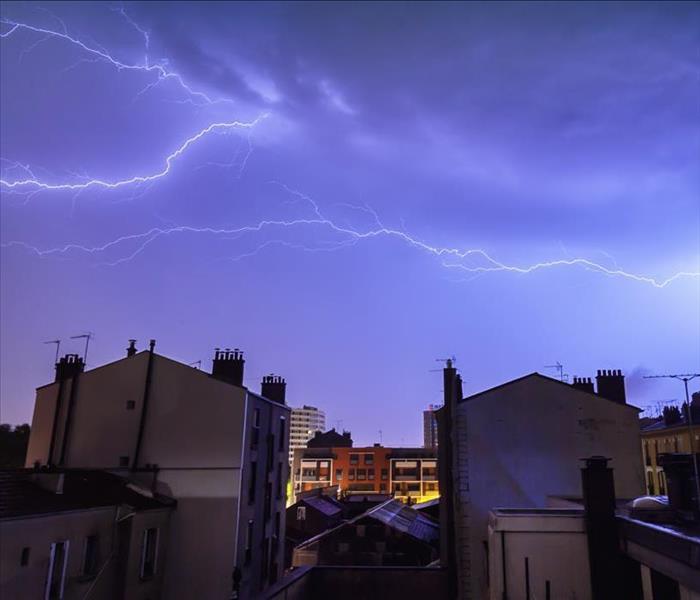Indoor Lightning Safety for Homeowners
6/17/2022 (Permalink)
 Once you find shelter inside, did you know that there are additional lightning safety guidelines for indoors?
Once you find shelter inside, did you know that there are additional lightning safety guidelines for indoors?
Almost one-third of injuries sustained from lightning strikes, according to The Centers for Disease Control, occur inside homes. Outdoor lightning safety is something with which we’re likely all familiar; we know to get out of the pool or ocean when we hear a rumble of thunder and to seek shelter indoors immediately. But once you find shelter inside, did you know that there are additional lightning safety guidelines for indoors? Although lightning is dangerous any time of the year, because lightning occurs most frequently during the summer, discussing lightning safety this time of year is especially relevant. Therefore, now is a good time to get familiar with indoor lightning safety in order to protect your home, as well as those living in it, from the safety risks of storms.
If lightning strikes a residential structure, it can make for a serious fire hazard. “Each spark of lightning,” as explained by Weather.gov, “can reach over five miles in length, soar to temperatures of approximately 50,000 degrees Fahrenheit, and contain 100 million electrical volts.” Knowing this, it is evident that lightning is powerful enough to ignite dangerous fires in residential structures, as the electrical currents sent through homes that result from lightning can pose safety hazards to those living in the home. For additional lightning safety tips that can be practiced in your home during a storm, continue reading.
Keep Your Distance from Electrical Equipment
Since we know that lightning can contain 100 million electrical volts, we can deduce that your home and those living in it can be protected from lightning safety hazards by refraining from using electrical equipment during a thunderstorm. If electronics are used during a storm, they can facilitate electrical shock or fire. It is important to understand that lightning also travels through electrical currents, such as those used by radios and televisions, so corded landlines and other devices that are plugged in should not be used during thunderstorms. Instead, grab a battery-powered radio or your smartphone to stay on top of forecast updates. To protect your electrical devices during a storm, consider purchasing surge protectors for your home.
Avoid Plumbing and Water
Most of us can think of a time when the lifeguard has called us in from the ocean or whistled us out of the pool due to thunder from an approaching storm. It is important to get out of the water during a storm, but it is recommended to also avoid water indoors during a storm. Activities that use water, including taking a bath, showering, and even washing the dishes,are dangerous during a thunderstorm, since lightning can travel through a property’s plumbing. It is safest, therefore, to hold off on these activities until the storm passes.
Shelter in the Safest Area Possible
We all know to seek shelter indoors during a storm. However, where in the home you shelter is also important. Be sure to avoid screened-in porches and rooms with windows or doors. Instead, seek shelter in an interior room of the home and, because lightning can travel through concrete walls and flooring, keep your distance from concrete floors and walls.
Storm Damage Takes You By Surprise? Call SERVPRO
By taking the preventative measures outlined in this blog, you can help protect your home and those living in it from the safety hazards caused by lightning. Still, your home may endure storm damage because storms are unpredictable, powerful, and often dangerous. If your home experiences unexpected storm damage, remember that SERVPRO Team Wall is only a call away. To learn more about our various Storm Damage Restoration services and the SERVPRO Disaster Recovery Team, check out our website or speak with one of our knowledgeable team members by giving us a call at (717) 510-6779 at the first sign of storm damage. SERVPRO of Metro Pittsburgh East is here to help make it “Like it never even happened” for your home after any disaster.





 24/7 Emergency Service
24/7 Emergency Service